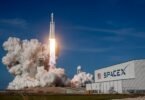What Makes a Rocket Fly?
Rockets are among the most remarkable human inventions, enabling exploration beyond our planet, powering satellites into orbit, and even carrying astronauts to the Moon and beyond. But have you ever wondered what truly makes a rocket fly? The science behind rockets is a fascinating blend of physics, engineering, and human ingenuity. To understand this, we must explore the principles of motion, the forces at play, the design of rockets, and the various stages that allow them to soar into space.
Understanding Rocket Flight: The Basics
Rocket flight is governed by the fundamental laws of motion, most notably those described by Sir Isaac Newton. Unlike airplanes, which rely on air to generate lift, rockets can fly both within Earth’s atmosphere and in the vacuum of space because they carry both fuel and an oxidizer.
A rocket does not “push” against the air or ground to ascend. Instead, it operates on the principle of action and reaction: by expelling gas at high speed in one direction, it propels itself in the opposite direction.
Newton’s Third Law: The Foundation of Rocket Flight
The cornerstone of rocket propulsion is Newton’s Third Law of Motion, which states: For every action, there is an equal and opposite reaction.
In the context of a rocket:
-
Action: Hot gases are expelled out of the rocket’s engine at high velocity.
-
Reaction: The rocket moves in the opposite direction with an equal and opposite force.
This principle explains why rockets can fly in the vacuum of space where there is no air to “push against.” The expelled gases create the necessary thrust by pushing on the rocket itself, not on the surrounding medium.
The Four Forces Acting on a Rocket
To understand what makes a rocket fly, we must analyze the forces acting upon it:
1. Thrust
Thrust is the forward force generated by the rocket engine. It propels the rocket upward by expelling high-speed exhaust gases. The more efficiently the fuel burns, the greater the thrust.
2. Weight (Gravity)
Gravity pulls the rocket toward Earth. A rocket must generate enough thrust to overcome this force to lift off.
3. Drag
As a rocket moves through the atmosphere, it encounters air resistance or drag. Engineers design rockets with streamlined shapes to minimize drag during ascent.
4. Lift
Unlike airplanes, rockets do not depend significantly on lift from wings. However, aerodynamic surfaces may be used during certain flight phases to help maintain stability.
How Does a Rocket Engine Work?
The heart of any rocket is its engine. A rocket engine works by burning fuel with an oxidizer to produce high-pressure, high-temperature gas, which is expelled through a nozzle.
Components of a Rocket Engine
-
Fuel: Provides chemical energy (e.g., liquid hydrogen, kerosene).
-
Oxidizer: Allows the fuel to burn in space where there is no oxygen (e.g., liquid oxygen).
-
Combustion Chamber: Where fuel and oxidizer mix and ignite.
-
Nozzle: Directs the flow of gases to maximize thrust.
Types of Rocket Engines
-
Liquid-Fuel Rockets: Use liquid propellants, which can be controlled (throttle, stop, or restart). Example: SpaceX’s Falcon 9.
-
Solid-Fuel Rockets: Contain solid propellant; simpler but cannot be throttled or shut down easily. Example: Space shuttle boosters.
-
Hybrid Rockets: Combine elements of both, using a liquid oxidizer and solid fuel.
The Principle of Conservation of Momentum
Another key concept is the conservation of momentum, which states that the total momentum of a closed system remains constant unless acted upon by external forces.
When a rocket expels mass (exhaust gases) backward at high speed, it gains momentum in the opposite direction. The faster the gases are expelled and the more mass expelled per second, the greater the rocket’s acceleration.
Stages of Rocket Flight
Most rockets use a multi-stage system to reach space. This method allows rockets to shed weight as they ascend.
1. First Stage: Liftoff and Ascent
-
Provides maximum thrust to escape Earth’s gravity.
-
Burns a significant portion of the fuel.
-
After depletion, this stage detaches to reduce mass.
2. Second Stage: High-Altitude Boost
-
Operates after the first stage separates.
-
Carries the payload to a higher altitude and faster speed.
3. Third Stage: Orbital Insertion or Final Push
-
Used for precise placement into orbit or to propel the spacecraft toward its destination (e.g., Moon or Mars).
By discarding each empty stage, the rocket becomes lighter and more efficient as it travels higher.
Overcoming Earth’s Gravity: Escape Velocity
For a rocket to leave Earth permanently, it must reach escape velocity, which is approximately 11.2 kilometers per second (25,000 mph). However, most rockets headed for orbit do not need to reach this speed immediately; they achieve orbit first (at about 7.8 km/s) and then can use additional propulsion to escape Earth’s gravity well.
The Role of Aerodynamics
Aerodynamics plays an essential role during the initial phases of rocket flight, when the rocket travels through Earth’s atmosphere.
-
Nose Cone: Designed to reduce air resistance.
-
Fins: Help stabilize the rocket’s trajectory.
-
Body Shape: Streamlined to minimize turbulence.
Once the rocket reaches the upper atmosphere, aerodynamic forces become negligible.
Fuel Efficiency: The Rocket Equation
The Tsiolkovsky rocket equation, formulated by Konstantin Tsiolkovsky, explains the relationship between a rocket’s mass, velocity, and fuel consumption:
Δv=velnm0mf\Delta v = v_e \ln\frac{m_0}{m_f}
Where:
-
Δv\Delta v: Change in velocity.
-
vev_e: Exhaust velocity.
-
m0m_0: Initial mass (with fuel).
-
mfm_f: Final mass (after fuel is burned).
This equation shows why rockets carry a massive amount of fuel compared to their payload—the more fuel, the more mass, and the harder it is to accelerate.
Guidance and Control Systems
A rocket must not only launch but also reach a specific target or orbit. This requires advanced guidance and control systems.
-
Gyroscopes and Accelerometers: Track position and motion.
-
Onboard Computers: Calculate trajectory adjustments.
-
Thrusters and Gimbals: Adjust engine direction for steering.
-
Reaction Control Systems (RCS): Used in space for fine maneuvers.
Without precise guidance, a rocket could veer off course and fail its mission.
Read More: Rockets Through History: From V-2 to Starship
Rockets in Space: How Do They Move Without Air?
A common misconception is that rockets need air to push against. In reality, they do not. The expelled gases create thrust by exerting force on the rocket itself, as per Newton’s Third Law.
In the vacuum of space:
-
There is no drag to slow the rocket down.
-
Small bursts of gas from thrusters can create significant changes in velocity or orientation.
-
Momentum is conserved, meaning a rocket will continue moving unless acted upon by another force.
The Role of Staging in Rocket Flight
Multi-stage rockets revolutionized space exploration. Early single-stage rockets could not carry enough fuel to reach orbit efficiently. By dividing the rocket into stages:
-
Each stage carries its own engines and fuel.
-
Empty stages are discarded, reducing weight.
-
Final stages can carry payloads like satellites, telescopes, or spacecraft.
This system allows modern rockets to carry heavy payloads into space with much greater efficiency.
Types of Rocket Missions
Orbital Launches
Used to place satellites into Earth’s orbit (low Earth orbit, geostationary orbit, etc.).
Suborbital Flights
Travel into space but do not complete an orbit, such as many space tourism missions.
Interplanetary Missions
Use rockets to propel spacecraft toward other planets, moons, or asteroids.
Human Spaceflight
Carries astronauts to destinations such as the International Space Station or the Moon.
Heat and Re-Entry Challenges
Launching a rocket is only half the challenge. Returning safely requires dealing with intense heat generated by atmospheric re-entry.
-
Heat Shields: Protect spacecraft from extreme temperatures.
-
Controlled Descent: Uses parachutes, thrusters, or both.
-
Reusable Rockets: Modern technology (e.g., SpaceX) allows rockets to land and be reused, dramatically reducing costs.
The Future of Rocket Flight
Rockets are evolving rapidly, with innovations aimed at making space travel safer, cheaper, and more efficient.
Reusable Rockets
Companies like SpaceX and Blue Origin are pioneering reusable first stages, landing them vertically for refurbishment and relaunch.
Electric and Ion Propulsion
Used mainly for deep-space missions; they offer high efficiency but low thrust, making them unsuitable for launch from Earth.
Nuclear Thermal Rockets
Potential future systems that could reduce travel time to Mars and beyond.
Space Elevators and Alternative Concepts
Theoretical concepts aim to replace chemical rockets with more energy-efficient methods.
Why Rockets Are So Expensive
Rocket launches cost millions to billions of dollars due to:
-
High fuel requirements.
-
Complex engineering.
-
Risk factors and testing.
-
Limited reusability (though this is improving).
Every kilogram of payload requires careful calculation and significant fuel to lift it beyond Earth’s gravity.
Rockets and Environmental Impact
Rocket launches can impact the environment:
-
Exhaust Gases: Release carbon dioxide and other chemicals.
-
Sonic Booms: Affect nearby communities.
-
Debris: Space junk is an increasing concern.
Efforts are being made to minimize these effects through cleaner fuels and reusable technologies.
Rockets vs. Airplanes: Key Differences
-
Airplanes need air; rockets do not.
-
Airplanes generate lift via wings; rockets generate thrust via engines.
-
Airplanes cruise at relatively low speeds and altitudes; rockets can leave Earth’s atmosphere entirely.
Rockets in Everyday Life
Even if you never see a rocket launch, they affect your daily life:
-
Satellites provide GPS, weather forecasts, and communication.
-
Scientific missions expand our understanding of the universe.
-
Defense and security rely on rocket technology for satellites.
Conclusion:
What makes a rocket fly is not magic—it is the mastery of physics, chemistry, and engineering. From Newton’s laws to modern reusable rockets, the principles remain the same: expel mass at high speed to create thrust, overcome gravity, and control the flight precisely. As technology advances, rockets will continue to shape humanity’s future—exploring new worlds, connecting people globally, and perhaps one day carrying humans beyond the solar system.
Rockets are a testament to human curiosity and innovation. Each launch represents not only a triumph of science but also a step toward answering one of humanity’s greatest questions: What lies beyond our planet?







